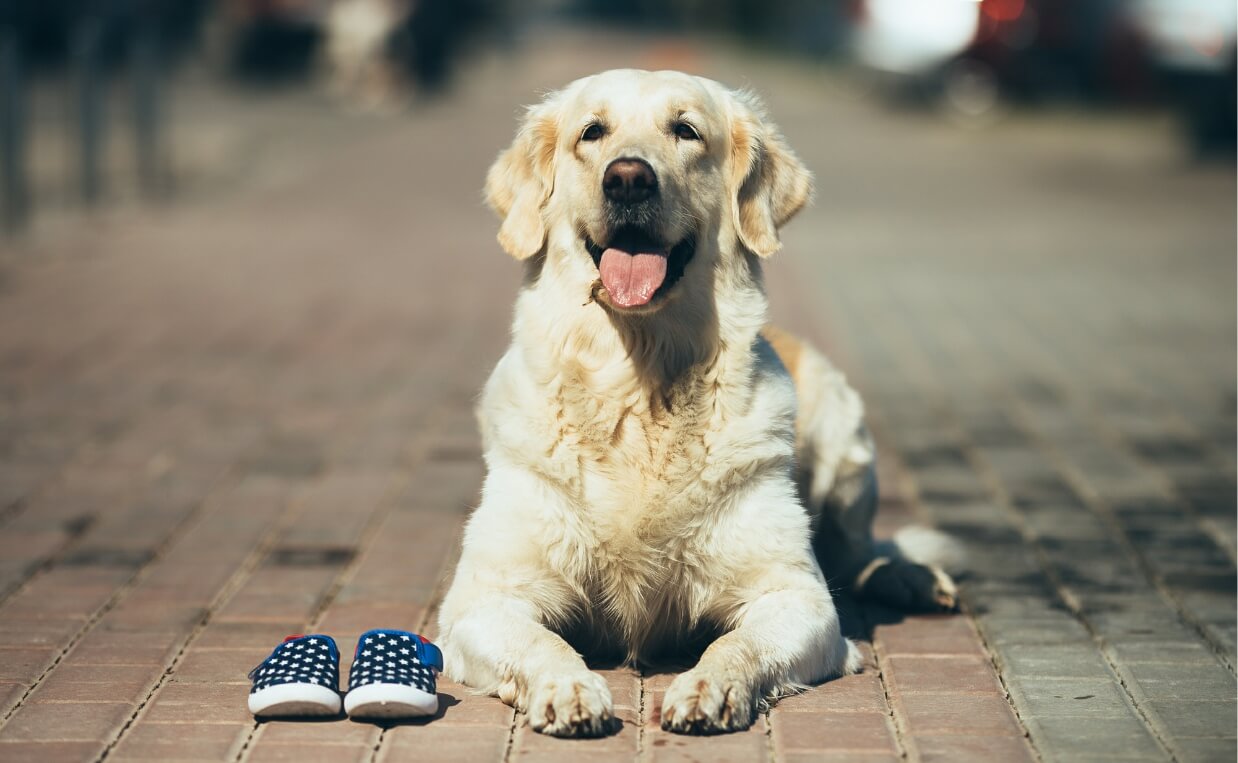
It’s summertime, a time when we love to take our dog hiking or go on other outdoor excursions. There are many dangers for dogs when the temperature gets hot outside, such as heatstroke, dehydration and death due to being left in a car. But one danger owners may not think about is the exposure of canine paws to hot pavement. Yes, it’s true. Dogs can scorch their paw pads on the ground on a sweltering summer day.
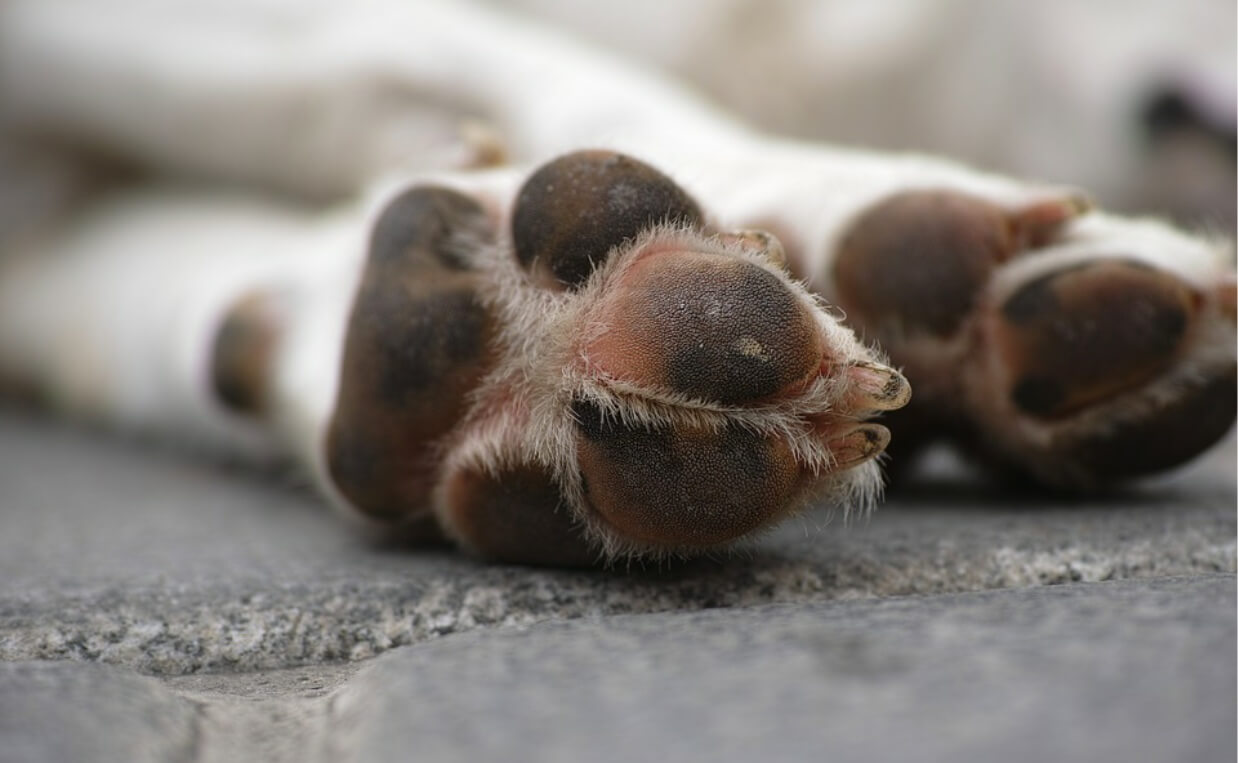
What You Should Know About Your Dog’s Paws
There is a lot going on underneath the fur of a dog’s paw. A dog’s paw consists of five different parts:
-
Claws
The nails on a dog are called claws.
-
Digital pads
The pads under each claw are called digital pads, one for each claw.
-
Metacarpal pad
In the middle of the paw and underneath the digital pads is the metacarpal pad.
-
Dewclaw
The little claw off to the side that looks like it could be a thumb is called the dewclaw. Not all dogs will have a dewclaw.
-
Carpal pad
The carpal pad acts like a heel in human terms. The primary purpose of the carpal pad is to essentially “put on the brakes” when running or going down a slope.
Together, the digital pads and metacarpal pad support most of a dog’s weight when walking or running. These pads are important for absorbing the weight of a dog’s body, helping to keep stress off their bones and joints. The pads are made up of a thick, fatty tissue on the inside which acts as both a cushion and insulation.
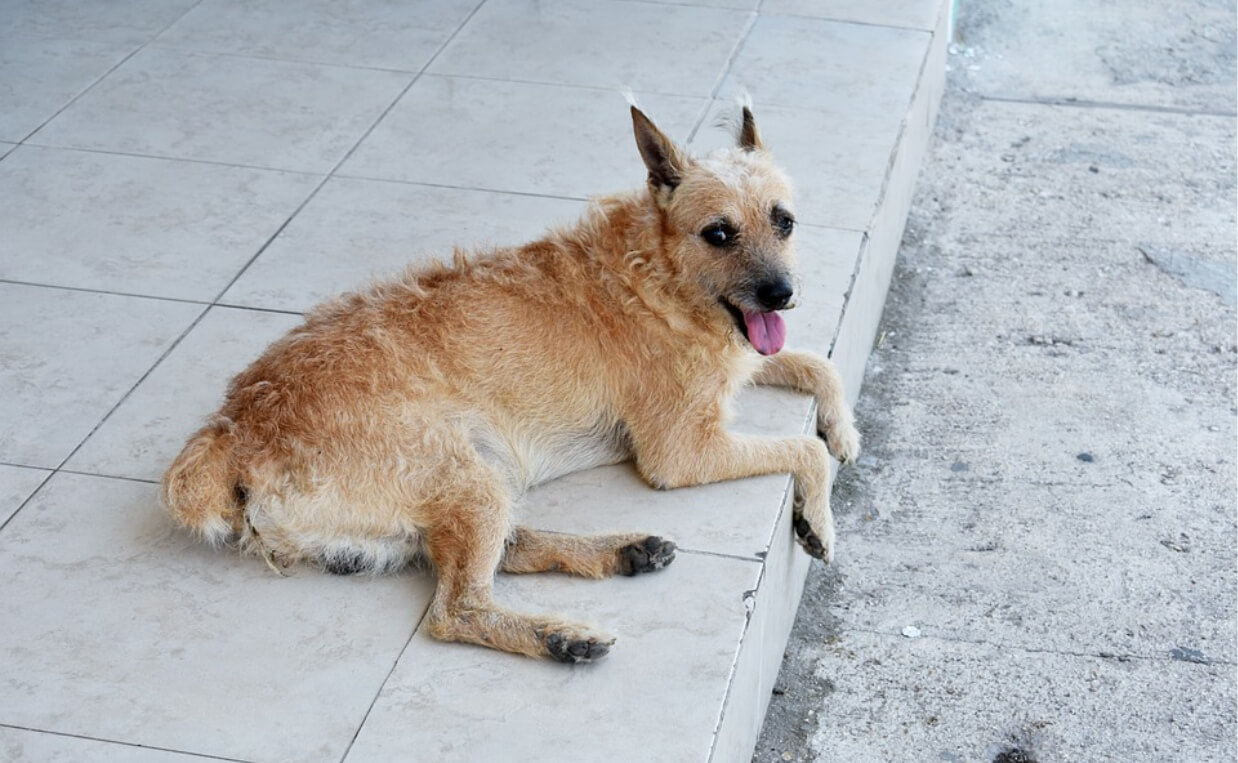
When Is It Too Hot for Your Dog’s Paws?
Asphalt and concrete can become sizzling hot rather quickly, so it’s important to recognize when it’s too hot to expect your dog to walk on it. Hot pavement can burn your dog’s paws, especially if they’ve been indoors for most of the colder months and haven’t built up toughness on their pads.
An easy way to tell if it’s too hot is to hold your hand on the concrete. If you can’t hold it there for at least ten seconds, it’s too hot for your dog to comfortably walk on.
To avoid hot surfaces, try to walk your dog early in the morning or late in the evening, when it’s cooler. If you’re already on a walk and you realize the ground is hot, try to make sure your dog walks on the grass.
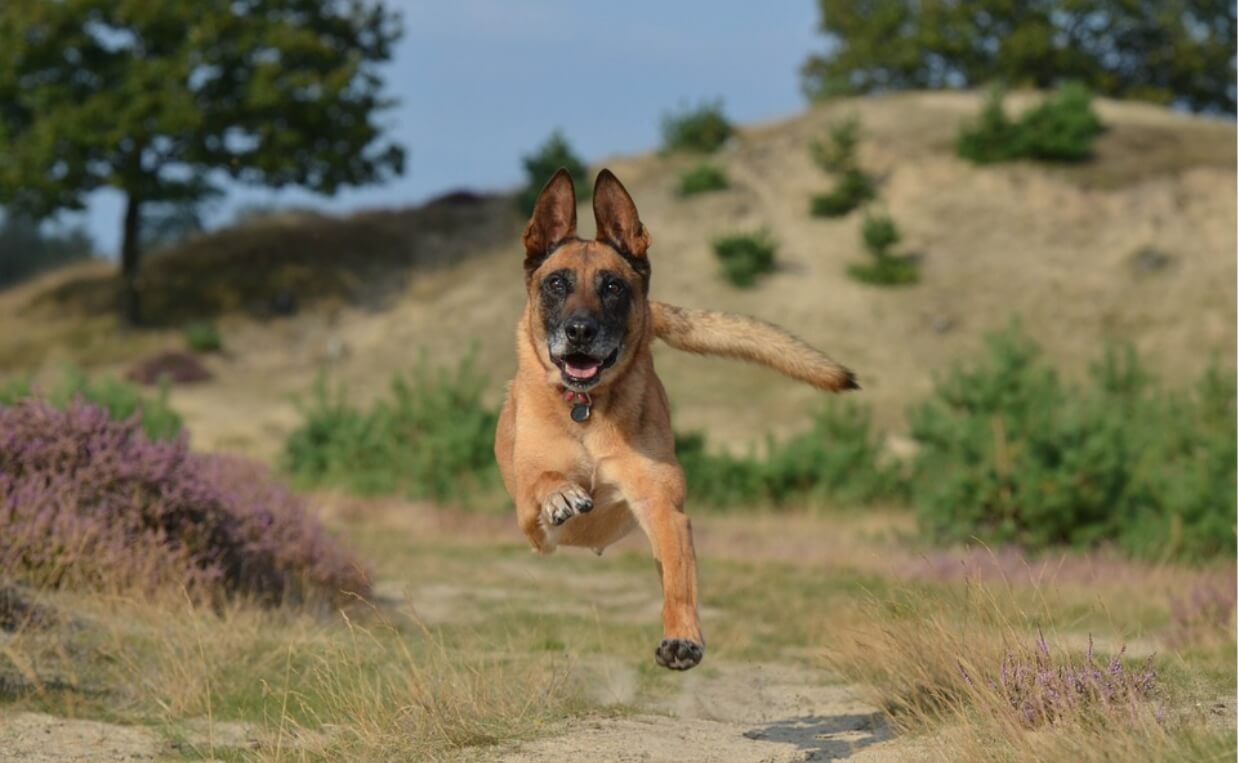
Active Dogs Need Active Shoes
Is your dog an active dog? If so, he or she probably needs to be active during the hot summer months – and the harsh, cold winter months as well. Your dog’s paw pads are soft and need to be protected from the harsh weather elements. His or her pads are prone to injury and they need to be protected.
Dogs who take part in outdoor activities without shoes may be open to cut, sore, blistered and cracked paw pads, all of which are quite painful. The best dog shoes will provide the extra protection they need to keep their sensitive pads, and areas between them, safe from injury.

Older Dogs May Benefit from Shoes
As dogs age, their body starts to show signs of wear and tear, especially their hips, back and paw pads. Veterinarians often prescribe dog shoes to provide extra cushioning and support.
Some dogs drag their feet when they walk as they get older. Dog shoes help them gain more stability and increase their mobility.
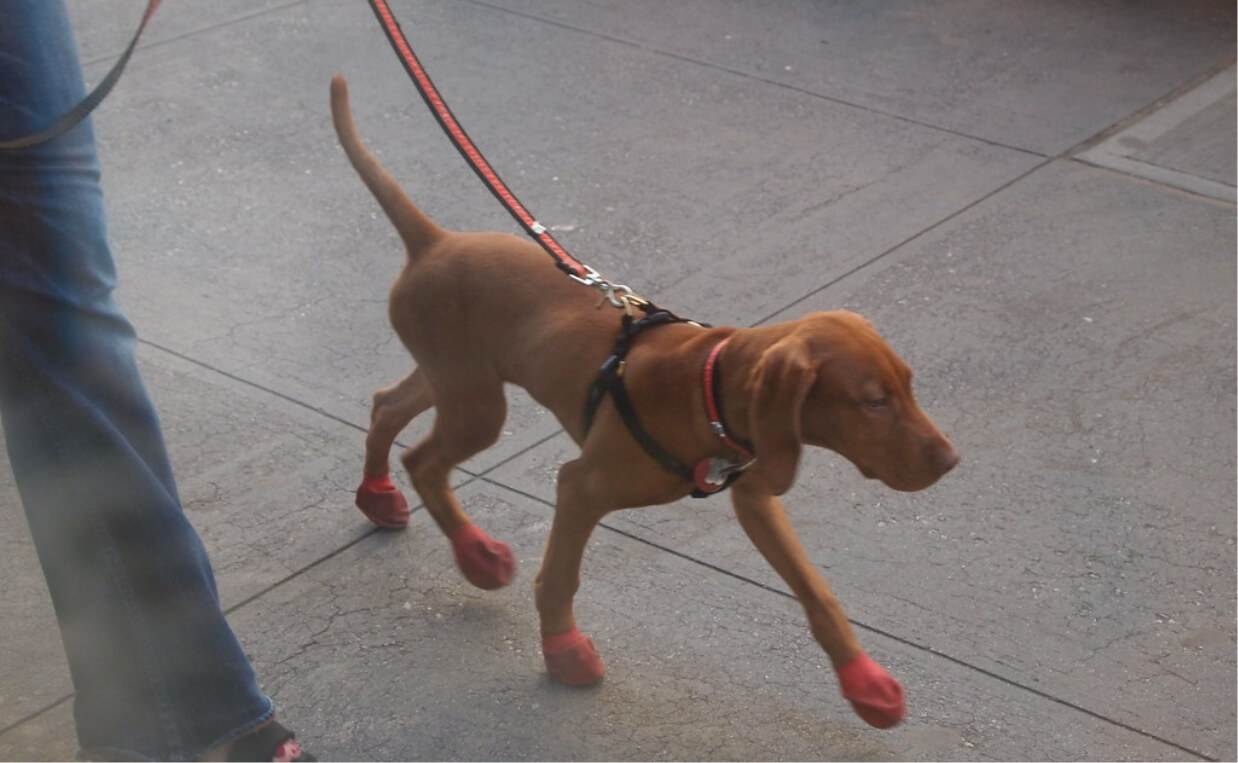
How to Choose the Best Dog Shoes
As you shop for the best shoes for your dog, here are some features to consider.
- The best dog shoes are water resistant. Even if you don’t plan to take your dog swimming or through wet terrain, water resistant shoes will help protect your dog from rain or wet snow.
- The sole should be rugged and textured. This not only ensures they’ll be slip resistant but will ensure they will last longer too.
- Proper fit is essential. Follow the manufacturer’s sizing instructions.
- Easy to put on. Dogs are generally not excited about having shoes on their feet, so they need to be quick to put on and stay on securely.
- They should be breathable if you’re planning on hot weather hiking or walking.
- Reflective Velcro helps assure your dog will be seen by motorists and other pedestrians when after dark.
More Paw Protection
To treat cracked and dry paw pads, consider asking your veterinarian for a recommendation. One highly recommended paw wax product is Musher’s Secret Dog Paw Pad Wax. You can also try using a small amount of Vaseline to help protect the pads, just don’t use too much because you don’t want your dog to lick and ingest it. Just don’t apply human hand moisturizers, which can soften pads and lead to injury.
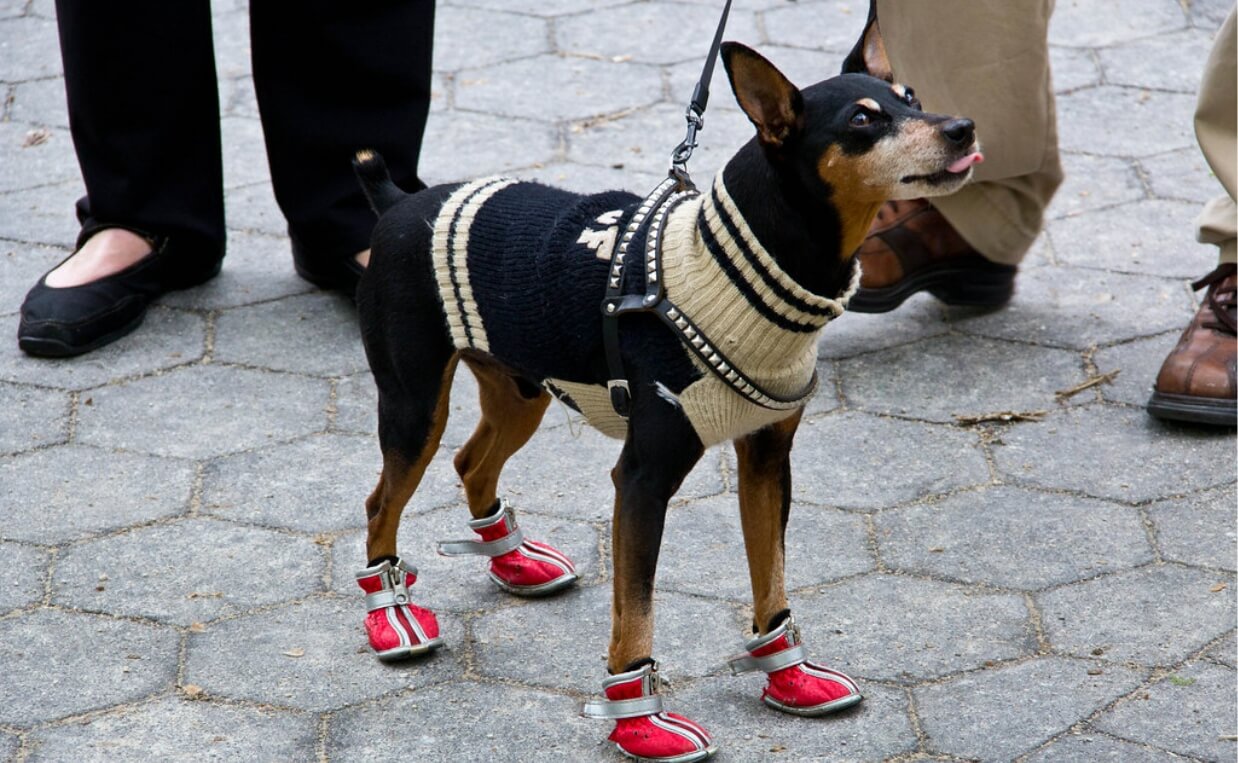
When Should Your Dog Wear Shoes?
Many dog parents are unsure of when shoes are needed.
- Too cold or icy. Many dogs have sensitive paws and need shoes once it drops below 10 degrees Fahrenheit. However, if your dog has long hair, he or she may get clumps of ice stuck between the pads, so anytime there’s ice or snow he or she may need shoes. These ice clumps can become painful. Another test is if snow squeaks when you walk on it then it’s too cold.
- Protection from chemical exposure. Even when the cold isn’t extreme, dog boots will offer protection from de-icing products. Sometimes antifreeze products include a poisonous substance to melt the ice.
- Salt has been spread. If you’ll be walking your dog in an area where salt has been spread, put shoes on. The salt can get stuck between their paws and be quite painful.
- Too hot. As mentioned earlier, if the ground is too hot for you to hold your hand on it for a few seconds, your dog needs shoes.
- After an injury or surgical procedure. If your dog has a foot injury or needs surgery, it will be important to cover the dog’s feet for optimal recovery. Shoes will help keep the wound or surgical incision clean until it fully heals.
- Hiking in rough terrain. If you’re planning a hike where there might be hazards, such as sharp rocks, roots, burrs, dips in the soil, etc., plan to put your dog in protective shoes.
- Swimming in a lake, river or reservoir. Many lakes, rivers and reservoirs have sharp rocks in them.
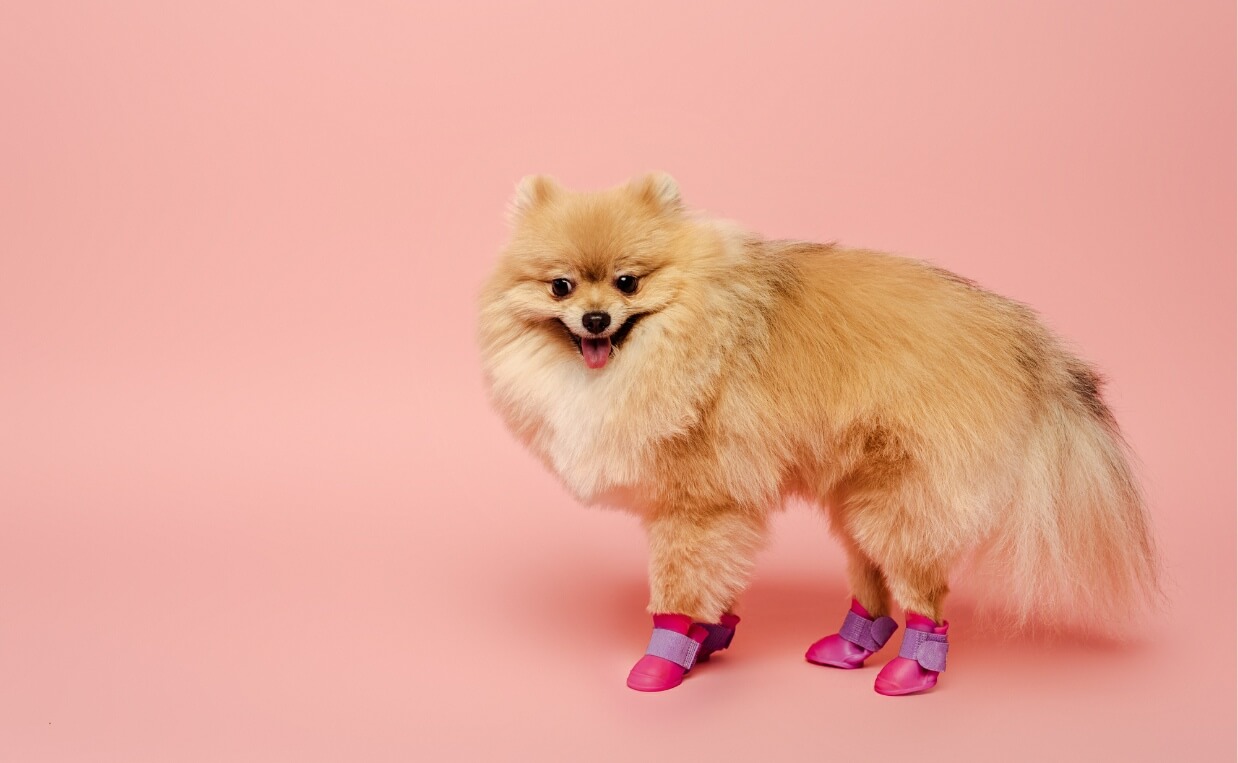
How to Keep Dog Shoes On
Some dogs will be more resistant to putting dog shoes on than others. Regardless of how you get the shoes on, keeping them on can be even more difficult. Make sure the shoes fit your dog properly (according to the manufacturer’s guide). Once you receive the shoes, practice putting them on before you need to use them to go outside. Ensure the paws are all the way into the shoes and are securely strapped on.
Getting your dog to wear shoes might seem like a daunting task, but if you use the above tips you’ll soon be on your way to ensuring your dog’s paws are protected when you go on outdoor activities, during cold and hot weather.
Do you put shoes on your dog in severe weather conditions or for rugged outdoor activities? Please share your experience in the comments below…

 New Google Photo App Pet Feature Adds Fun for Dog Lovers
New Google Photo App Pet Feature Adds Fun for Dog Lovers Chew-Proof Dog Beds: Are They Real or Just a Myth?
Chew-Proof Dog Beds: Are They Real or Just a Myth? 24 Fun Ways to Spoil Your Dog
24 Fun Ways to Spoil Your Dog How to Pick Out the Ideal Leash for Your Dog
How to Pick Out the Ideal Leash for Your Dog How to Choose a No-Pull Harness for Your Dog
How to Choose a No-Pull Harness for Your Dog






Leave a Reply